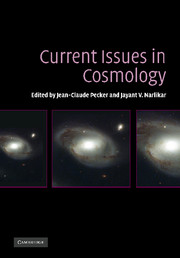Book contents
- Frontmatter
- Contents
- List of contributors
- Preface
- Part I Observational facts relating to discrete sources
- Part II Observational facts relating to background radiation
- 4 CMB observations and consequences
- 5 Abundances of light nuclei
- 6 Evidence for an accelerating Universe or lack of?
- Part III Standard cosmology
- Part IV Large-scale structure
- Part V Alternative cosmologies
- Part VI Evidence for anomalous redshifts
- Part VII Panel discussion
- Index
5 - Abundances of light nuclei
Published online by Cambridge University Press: 15 December 2009
- Frontmatter
- Contents
- List of contributors
- Preface
- Part I Observational facts relating to discrete sources
- Part II Observational facts relating to background radiation
- 4 CMB observations and consequences
- 5 Abundances of light nuclei
- 6 Evidence for an accelerating Universe or lack of?
- Part III Standard cosmology
- Part IV Large-scale structure
- Part V Alternative cosmologies
- Part VI Evidence for anomalous redshifts
- Part VII Panel discussion
- Index
Summary
Abstract
An overview of the standard model of big bang nucleosynthesis (BBN) in the post-WMAP era is presented. In this context, the theoretical prediction for the abundances of D, 3He, 4He, and 7Li is discussed. The observational determination of the light nuclides is also discussed. While, the D and 4He observations are concordant with BBN predictions, 7Li remains discrepant with the CMB-preferred baryon density and possible explanations are reviewed.
The standard model [1] of big bang nucleosynthesis (BBN) is based on an extended nuclear network in a homogeneous and isotropic cosmology. Apart from the input nuclear cross sections, the theory contains only a single parameter, namely the baryon-to-photon ratio, η ≡ nB/nγ. The theory then allows one to make predictions (with specified uncertainties) of the abundances of the light elements, D, 3He, 4He, and 7Li.
There have been many improvements over the last few years in the state of the theory, particularly in the treatment of the nuclear cross-sections. However, perhaps the most important new input is the WMAP determination of the baryon density [2], ΩBh2, or equivalently η. Thus one is now able to make very precise predictions of the light element isotopes, which can be individually compared with observation [3]. The predictions span some nine orders of magnitude in abundance. The major uncertainties in BBN calculations come from the thermonuclear reaction rates. There are 11 key strong rates (as well as the neutron lifetime) that dominate the uncertainty budget [4, 5].
Recently the input nuclear data have been carefully reassessed [4–7], leading to improved precision in the abundance predictions. The NACRE collaboration presented a larger focus nuclear compilation [6].
- Type
- Chapter
- Information
- Current Issues in Cosmology , pp. 69 - 75Publisher: Cambridge University PressPrint publication year: 2006



